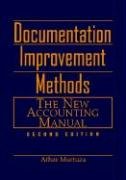Question
Company A manufactures one product, ABC. Company A uses budgets and standards in their functions, and uses these standards to get their budgeted cost per
Company A manufactures one product, ABC. Company A uses budgets and standards in their functions, and uses these standards to get their budgeted cost per unit.
Here is the information for the budgeted variable costs per unit.
| Raw Material: 3 lbs at $4 per pound | $12 |
| Direct Labor: .75 Direct labor hours at $20 per hour | $15 |
| Variable Overhead: .75 direct labor hours at $12 per hour | $9 |
| Total variable budgeted (standard) cost for ABC | $36 |
When determining the direct material cost for the planning budget income statement, the $12 budgeted material cost per unit of ABC will be used in the calculation.
Standards for fixed manufacturing overhead costs are: .75 direct labor hours at $8 per hour. The denominator level of activity is 30,000 direct labor hours.
The planning budget income state is based on the expectation of selling 40,000 units of ABC. Budgeted sales price is $65 per unit, and total budgeted fixed selling and admin costs are $500k. There are no variable selling and admin.
Company actually produced and sold 36k units this year. Company A does now have a beginning or ending inventory for raw materials, since it uses all raw material purchased. Company also does not have a beginning or ending inventory. Everything produced in the year is sold that same year.
The actual income statement for the year is provided.
| Sales: | |
| 36k units produced and sold at $68 | $2,448,000 |
| Less Variable Costs: | |
| Direct Material (100k lbs at $4.25 per lb) | $425,000 |
| Direct Labor (32k direct labor hours aat $18/hr) | $576,000 |
| Variable Manufacturing Overhead | $400,000 |
| Contribution Margin | $1,047,000 |
| Less Fixed Costs: | |
| Fixed Manufacturing Overhead Costs | $280,000 |
| Fixed Selling and Admin | $485,000 |
| Net Operating Income | $282,000 |
Question 1 : Can you give 3 reasons why you should use the flexible budget income statement in the variance analysis?
Question 2 : Prepare a detailed income state variance analysis using the contribution approach income state (variable costing) for the year. Compare the actual income statement with the flexible, and then compare the flexible with the planning budget. Show all revenue, spending, and activity variances in the analysis. Variances should be marked as unfavorable or favorable. Make sure to have Actual Results, Revenue and Spending Variances, Flexible Budget, Activity Variances, and Planning Budget numbers.
Question 3 : Prepare a detailed manufacturing cost variance analysis (calculate the : material price variance and quantity variance, labor rate variance and efficiency variance, variable overhead rate variance and efficiency variance, and fixed manufacturing overhead budget variance and volume variance) and mark as favorable or unfavorable.
Question 4 : Could you reconcile spending variances in Question 2 with manufacturing cost variances in question 3? How is the amount of spending variance for direct materials in question 2 explained by the amounts of direct material variances in question 3?
Step by Step Solution
There are 3 Steps involved in it
Step: 1

Get Instant Access to Expert-Tailored Solutions
See step-by-step solutions with expert insights and AI powered tools for academic success
Step: 2

Step: 3

Ace Your Homework with AI
Get the answers you need in no time with our AI-driven, step-by-step assistance
Get Started


